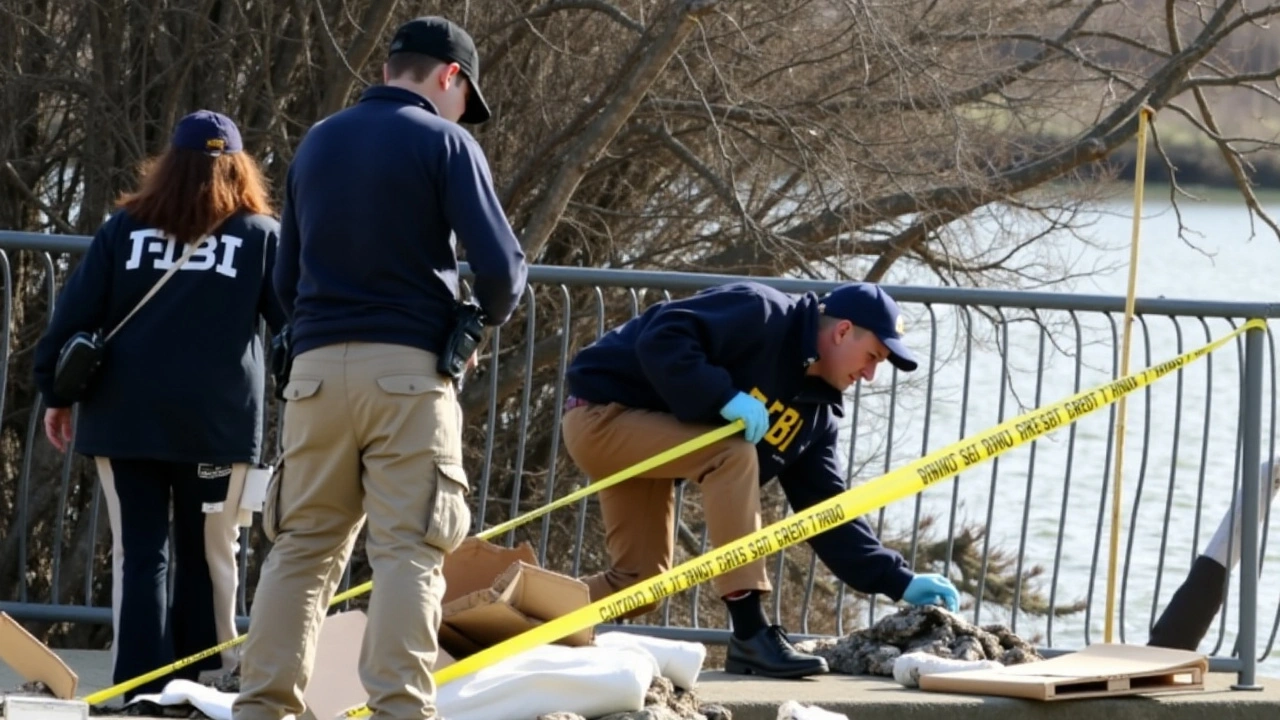The Tragic Mid-Air Collision
In a night shrouded with distress and confusion, a catastrophic mid-air collision took place, turning the skies above Washington DC into the scene of a major aviation disaster. An American Airlines jet, bustling with passengers, collided with a U.S. military helicopter, resulting in the tragic loss of 67 lives. The calamity unfolded near the Ronald Reagan Washington National Airport, a place that normally buzzes with the excitement of arrivals and departures, but on that fateful night, bore witness to a harrowing ordeal.
The echoes of the collision were heard far and wide, rending the night with sounds that no one wished to hear - an explosion, a cry for help, and the wail of sirens cutting through the air. Families and friends who had eagerly awaited the return of their loved ones found themselves plunged into depths of despair and uncertainty. The scene was chaotic; emergency teams rushed to the site, scouring for survivors amidst the wreckage in what was a race against time.
Black Boxes: The Silent Witnesses
In the aftermath, the National Transportation Safety Board (NTSB) swiftly moved into action, understanding that the chartered course to unravel the mystery of this crash lay in the interrogation of two silent witnesses. These witnesses, known in the aviation industry as black boxes, are comprised of the cockpit voice recorder and the flight data recorder. Despite being inanimate, they possess the potential to unveil the chain of events leading to this disaster.
The cockpit voice recorder serves as an unbiased ear, capturing radio transmissions, the conversations between pilots, and even the ambient sounds that include engine noises. It listens in silence, absorbing the interactions and decisions made in the cockpit during the flight’s critical moments. The flight data recorder, on the other hand, is the watchful eye that monitors the aircraft's performance, detailing up to 88 different parameters including altitude, airspeed, and heading among others.
The Role of Black Boxes in Accident Investigations
The recovery of these devices marks only the beginning phase of an extensive investigation. The data extracted from them is invaluable; it informs investigators of critical parameters such as engine speed, possible system failures, and can even facilitate the creation of a computer-animated reconstruction of the flight. Understanding these elements provides clarity on the operational status of the aircraft leading up to the tragic event.
Authorities are employing meticulous methods to analyze these recordings, hoping to answer the many questions that hang in the air. In high-stakes investigations like this one, the black boxes serve as a beacon of truth amidst the chaos, guiding analysts through what appears to be a complex puzzle of human error and technical failure.

Air Traffic Control: A Crucial Aspect
As revelations about the disaster come to light, a critical eye is also being cast on the air traffic control systems at the airport. Initial reports have alluded to potential flaws, particularly concerning the shortage of air traffic controllers. The Federal Aviation Administration (FAA) highlighted that staffing levels were below the necessary safe threshold, a situation that might have contributed significantly to the accident.
On the night of the collision, it is noted that an air traffic controller undertook responsibilities meant for two, owing to an early resignation by a co-worker, a decision that may have had dire consequences. This lapse in protocol has amplified calls for scrutiny into staffing practices at airports, particularly during critical operational hours when traffic is dense and requires heightened vigilance.
The Human Toll
Meanwhile, the human toll remains a palpable and painful reminder of the incident. Among the 67 who perished were individuals from various walks of life - families, hopeful athletes eyeing the future with promise, and seasoned aviation professionals whose journeys were abruptly ended. The tragedy has left loved ones devastated, their lives irrevocably changed in a moment's notice.
Recovery operations continue at the site, with search teams working tirelessly amidst debris in their somber quest to account for all the victims. As of Friday morning, 41 bodies had been recovered, a process fraught with emotional and physical challenges for everyone involved. The scene at the location is a poignant reminder of the fragile nature of human life and the unpredictable power of unexpected events.
Looking Towards Answers
The quest to understand the exact cause of this fatal collision continues, with each new finding serving as a piece of the complex puzzle. As the NTSB delves deeper into the data unearthed from the black boxes, and the FAA addresses air traffic control concerns, all eyes remain focused on deriving valuable lessons that could prevent such tragedies in the future.
These revelations are setting the stage for conversations that stretch beyond the immediate tragedy, inviting systemic changes necessary to bolster aviation safety. Families of the victims, impacted communities, and the world at large watch with anticipation, hoping for answers that provide closure and spur actionable insights to ensure safer skies for everyone.


Nupur Anand
February 2, 2025 AT 01:20Vivek Pujari
February 3, 2025 AT 19:37Ajay baindara
February 4, 2025 AT 11:05mohd Fidz09
February 5, 2025 AT 07:45suraj rangankar
February 6, 2025 AT 19:38Nadeem Ahmad
February 7, 2025 AT 10:14Aravinda Arkaje
February 9, 2025 AT 03:52kunal Dutta
February 9, 2025 AT 12:20Yogita Bhat
February 10, 2025 AT 06:07Tanya Srivastava
February 10, 2025 AT 06:28